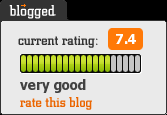
So our professor asked us to pair our reading of Manguel's "A History of Reading" (1996) to J.A. Appleyard's "Becoming a Reader" (1990). Both books deal with Reading as a behavior with a clearly defined history and evolving future. Manguel's book offers the reader more anecdotal morsels of historic, classical, and geeky flair, while the Appleyard book mostly talks about the research of important studies and modules on Reading and Literacy.
For example, in chapter 4, Appleyard gives the reader two different scenarios of two different students to illuminate the spectrum and range that can exist between two students that while literate have varying levels of literacy. Manguel's book widely cites Greek, Roman, and even African historical anecdotes like the fact that "In the tenth century, for instance, the Grand Vizier of Persia, Abdul Kassem Ismael, in order not to part with his collection of 117,000 volumes when travelling, had them carried by a caravan of four hundred camels trained to walk in alphabetical order" (Manguel, 1996, pg. 193).
So then, what thread of intersection exists between both books, if any? How do these books address each other, and to what extent is that conversation garrulous or reticent? I am drawn to chapter four of Appleyard's book because I feel that a great deal of what will concern my class resides in chapter four: college and beyond: reader as interpreter. It is in this chapter that Appleyard discloses her scale or ladder of cogent interpretation. The first stage is a complete abnegation of the text, as if it were completely transparent; this is usually as far as the high school reader will get because the farthest high school schema pushes for is a duality of perception where values are either good or bad, subjective or objective, moral or immoral.
This is right before the idea of the author becomes unmoored and goes through a deconsruction sieve, "This decentering leads next to a parallel deconstructing of the idea of the author, so that the reader learns to look directly at the text itself as an object containing the full evidence about its meaning...the realization that the text is constructed not only by the writer but also by the reader and by all the codes and cultural contexts they both depend on" (Appleyard, 1990, pg. 129-130) And the majority of Appleyard's theoretical ruminations are based on William Perry's observation of Harvard undergraduates in 1970. According to Appleyard, "In Perry's view, the principal developmental task of students is to come to terms with the multiplicity of truths and values that college presents to them" (Appleyard, 1990,pg. 130). Multiplicity seems to be at the core of Manguel's book so that it seems that Manguel wrote his "A Reading..." (1996) shortly after consulting Appleyard's,"Becoming a Reader" (1990).
In Manguel's chapter, "Reading the Future" there is a directed effort at explaining the history and function of sybils and "gospel cleromancy" (1990, pg.209). Gospel cleromancy was a form of divination wherein a person would open the Bible to a passage, at random, and attempt a correspondence or "reading" between that passage and the events of people's lives. This behavior had become so predominate that in 829 the "Council of Paris had to condemn it officially."(1990, pg. 209). In other words, Manguel's text is expounded in broad, historical swaths using the "multiplicity of truths"(1990, pg. 130) approach where examples may stretch hundreds if not thousands of years of reading evolution, "By the midsixteenth century, a reader would have been able to choose from well over eight million printed books, 'more perhaps than all the scribes of Europe had produced since Constantine founded his city in AD 330'"(1996, pg. 138).
There is also the idea that in the digital world, every screen is controlled by the side button or the scroll button; before the codex there existed scrolls, which were rolled up papyrus organized by subject or title. So in effect, two thousands years later, the person who reads must still "scroll" toward the knowledge contained in information halls. I guess an interesting question would be whether a codex or a hyperlink is the more advanced version of advancing from not known to known and ingested. This idea makes me excited mostly because it also relates to fiction with the work of Julio Cortazar who wrote, if I am not mistaken, the first hypertext novel, "Hopscotch" (1963).

.png)

No comments:
Post a Comment